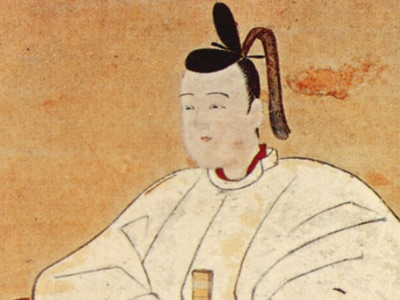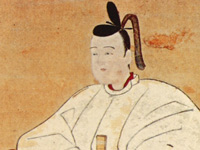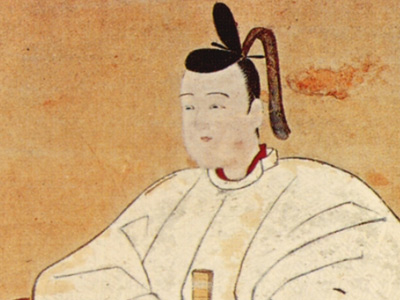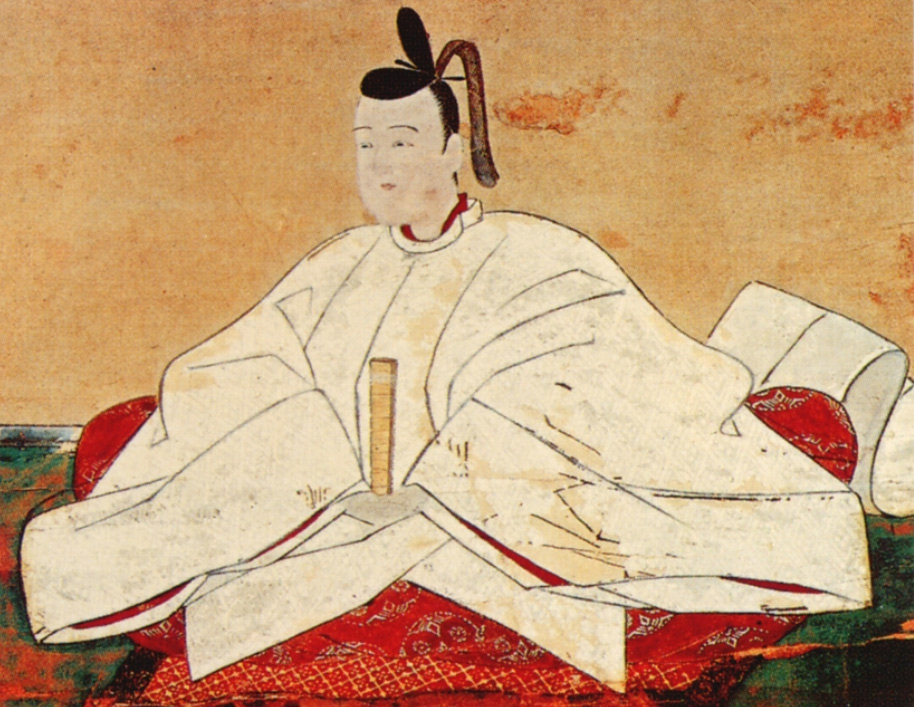Toyotomi Hideyoshi (1537-1598)

Decline of Power
The stability of the Toyotomi dynasty after Hideyoshi's death was put in doubt with the death of his son Tsurumatsu in September 1591. The three-year-old was his only child. When his half-brother Hidenaga died shortly after, Hideyoshi named his nephew Hidetsugu his heir, adopting him in January 1592. Hideyoshi resigned as kampaku to take the title of taikō (retired regent). Hidetsugu succeeded him as kampaku.
With Hideyoshi's health beginning to falter, but still yearning for some accomplishment to solidify his legacy, he adopted Oda Nobunaga's dream of a Japanese conquest of China and launched the conquest of the Ming dynasty by way of Korea (at the time known as Koryu or Joseon).
Hideyoshi had been communicating with the Koreans since 1587 requesting unmolested passage into China. As an ally of Ming China, the Joseon government of the time at first refused talks entirely, and in April and July 1591 also refused demands that Japanese troops be allowed to march through Korea. The government of Joseon was concerned that allowing Japanese troops to march through Korea (Joseon) would mean that masses of Ming Chinese troops would battle Hideyoshi's troops on Korean soil before they could reach China, putting Korean security at risk. In August 1591, Hideyoshi ordered preparations for an invasion of Korea to begin.
First campaign against Korea
In the first campaign, Hideyoshi appointed Ukita Hideie as field marshal, and had him go to the Korean peninsula in April 1592. Konishi Yukinaga occupied Seoul, which had been the capital of the Joseon dynasty of Korea, on May 10. After Seoul fell easily, Japanese commanders held a war council in June in Seoul and determined targets of subjugation called Hachidokuniwari (literally, dividing the country into eight routes) by each corps (the First Division of Konishi Yukinaga and others from Pyeongan Province, the Second Division of Katō Kiyomasa and others from Hangyong Province, the Third Division of Kuroda Nagamasa and others from Hwanghae Province, the Fourth Division of Mōri Yoshinari and others from Gangwon Province; the Fifth Division of Fukushima Masanori and others from Chungcheong Province; the Sixth Division by Kobayakawa Takakage and others from Jeolla Province, the Seventh Division by Mōri Terumoto and others from Gyeongsang Province, and the Eighth Division of Ukita Hideie and others from Gyeonggi Province). In only four months, Hideyoshi's forces had a route into Manchuria and occupied much of Korea. The Korean king Seonjo of Joseon escaped to Uiju and requested military intervention from China. In 1593, the Wanli Emperor of Ming China sent an army under general Li Rusong to block the planned Japanese invasion of China and recapture the Korean peninsula. The Ming army of 43,000 soldiers headed by Li Ru-song proceeded to attack Pyongyang. On January 7, 1593, the Ming relief forces under Li recaptured Pyongyang and surrounded Seoul, but Kobayakawa Takakage, Ukita Hideie, Tachibana Muneshige and Kikkawa Hiroie won the Battle of Byeokjegwan in the suburbs of Seoul. At the end of the first campaign, Japan's entire navy was destroyed by Admiral Yi Sun-sin of Korea whose base was located in a part of Korea the Japanese could not control. This, in effect, put an end to Japan's dream of conquering China as the Koreans simply destroyed Japan's ability to re-supply their troops who were bogged down in Pyongyang.
Succession dispute
The birth of Hideyoshi's second son in 1593, Hideyori, created a potential succession problem. To avoid it, Hideyoshi exiled his nephew and heir Hidetsugu to Mount Kōya and then ordered him to commit suicide in August 1595. Hidetsugu's family members who did not follow his example were then murdered in Kyoto, including 31 women and several children.
Twenty-six martyrs of Japan
On February 5, 1597, Toyotomi Hideyoshi had twenty-six Christians killed as an example to Japanese who wanted to convert to Christianity. They are known as the Twenty-six Martyrs of Japan. They included five European Franciscan missionaries, one Mexican Franciscan missionary, three Japanese Jesuits and seventeen Japanese laymen including three young boys. They were executed by public crucifixion in Nagasaki.
Second campaign against Korea
After several years of negotiations (broken off because envoys of both sides falsely reported to their masters that the opposition had surrendered), Hideyoshi appointed Kobayakawa Hideaki to lead a renewed invasion of Korea, but their efforts on the peninsula met with less success than the first invasion. Japanese troops remained pinned down in Gyeongsang Province. In June 1598, the Japanese forces turned back several Chinese offensives in Suncheon and Sacheon, but they were unable to make further progress as the Ming army prepared for a final assault. The Koreans continually harassed Japanese forces through guerrilla warfare. While Hideyoshi's battle at Sacheon was a major Japanese victory, all three parties to the war were exhausted. He told his commander in Korea, "Don't let my soldiers become spirits in a foreign land."
HISTORY

RESOURCES
This article uses material from the Wikipedia article "Toyotomi Hideyoshi (1537-1598)", which is released under the Creative Commons Attribution-Share-Alike License 3.0.
© Stories Preschool. All Rights Reserved.










